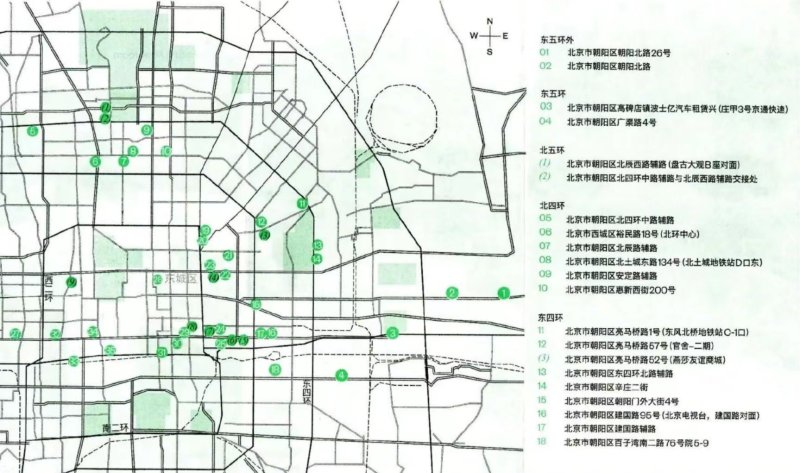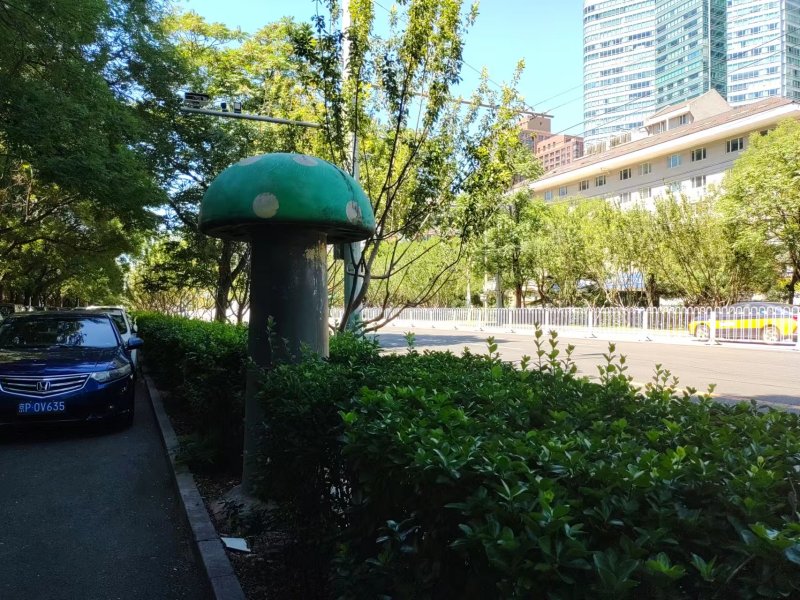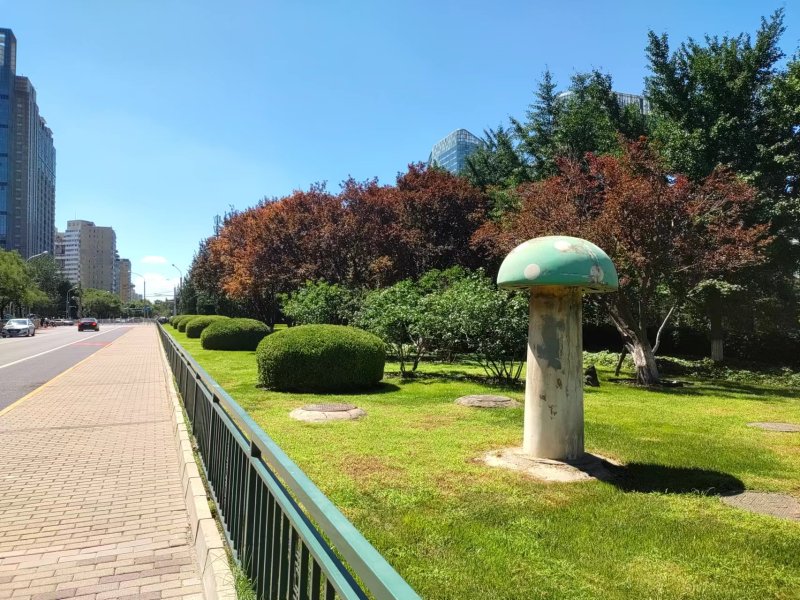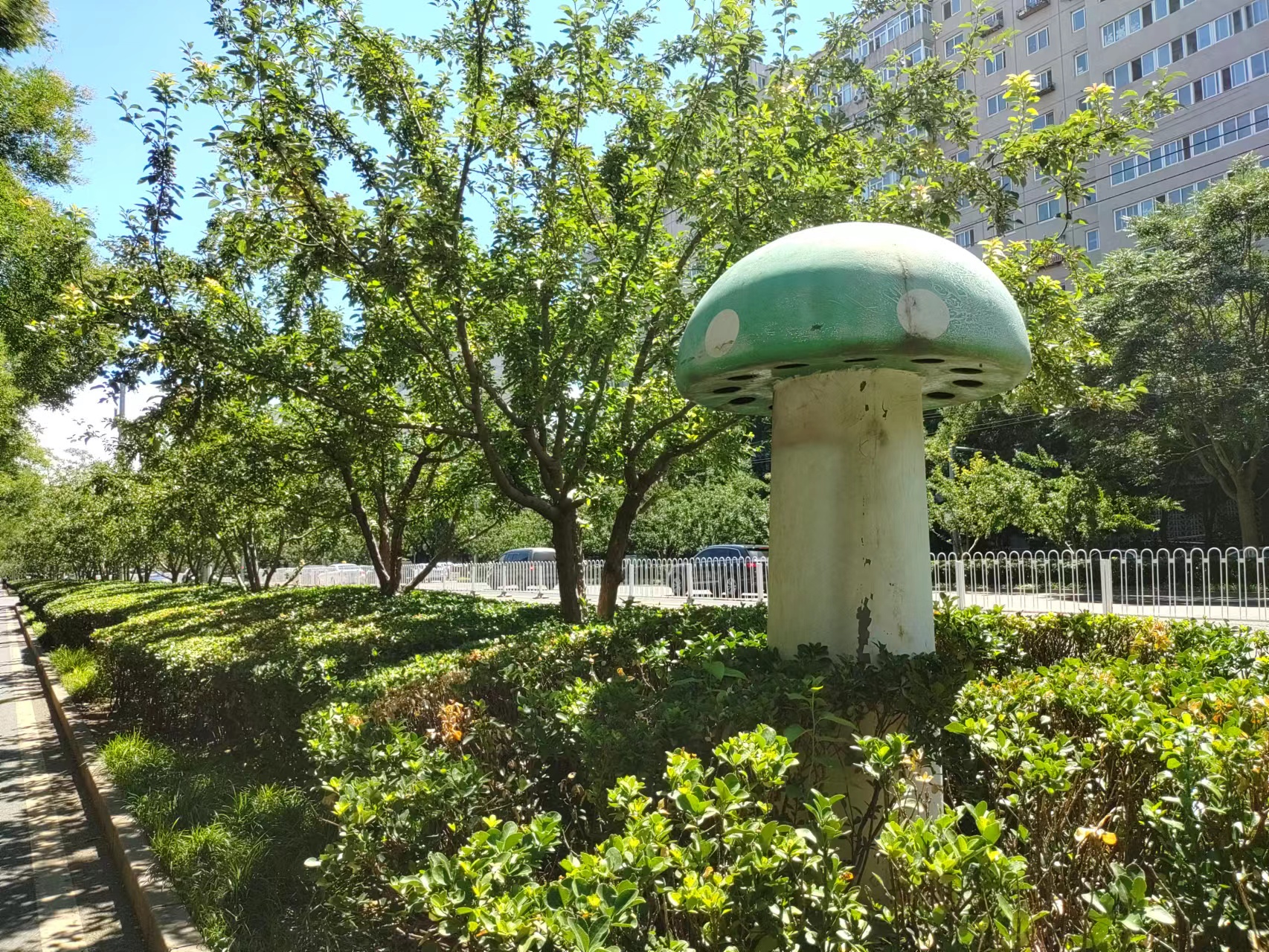The Mystery of Beijing's Giant Mushrooms
They're something you’ve probably seen before but not paid much mind to – integral parts of the city’s infrastructure whose purpose has been somewhat forgotten. And yet, the mushroom vents of Beijing have become living legends in their own right.
I first became aware of the vents – white tubes topped with green or red domes with holes on the underside that churn out steam in winter – when I stumbled across a zine detailing the mysterious vents titled Beijing Mushroom Field Guide (北京蘑菇寻找指南 Běijīng Mógū Xúnzhǎo Zhǐnán). Inside was a detailed map showing where vents could be found, and even stickers you could doodle on and paste on the objects.
Following this discovery, I began to notice a number of articles in local Chinese media began popping up about the vents. The focus was mainly on the Field Guide (which has since sold out due to an influx in demand), but also profiled average people and their experiences with the giant mushrooms of Beijing.

It’s not just big mushrooms, but mini mushrooms too, with one Beijinger reader reaching out to me with photos of smaller versions of these vents they found around Zuo’anmen (although it was unclear if they were vents or some other form of manhole cover).
And yet, in all this coverage, one thing was consistent: nobody really knows what the vents are actually for. This is highlighted in a piece on the mushrooms by Beijing22, a long-term project supported by the Goethe Institute China which explores the city’s urban environment.
According to the article, interest in the mushrooms peaks every fall, with posts cropping up all over Chinese social media featuring the structures.

The article goes into detail about one such post from Weibo, with Chinese users speculating as to the mushrooms' true purpose. One user even goes so far as to claim the vents are meant to protect human beings at night, or else “zombies holding the iron doors will eat my brand-new, unused, fresh brain.”
The article attempts to answer the mystery, explaining that the mushroom vents only “breathe” – letting out scalding hot steam that smells of sulfur, according to one interviewee – in the winter. The article postulates that the mushrooms are somehow connected to the central heating system, seeing as they only “bloom” every winter from November, about the time Beijing’s central heating is turned on.
This, or at least the idea that the mushrooms are connected to a heating system of some kind, is backed up by a report from Beijing Daily, in which, when asking city officials about the purpose of the vents, the reporter was told it was to let off water vapor formed by surface water seeping into heat wells under the mushrooms.

Central heating, heating wells, or whatever it may be, the Beijing mushrooms are still an oddity – as with all things that can be stumbled upon but are hard to find when searching for them, but they're a quintessential Beijing oddity that makes the capital all the more interesting.
Had any experiences with the Beijing mushrooms? What’s your theory as to their true purpose? Let us know in the comments!
READ: A Look Back at Gongti as New Workers' Stadium Inches Ever Nearer to Completion
Images: Vincent R. Vinci, 北京蘑菇寻找指南

